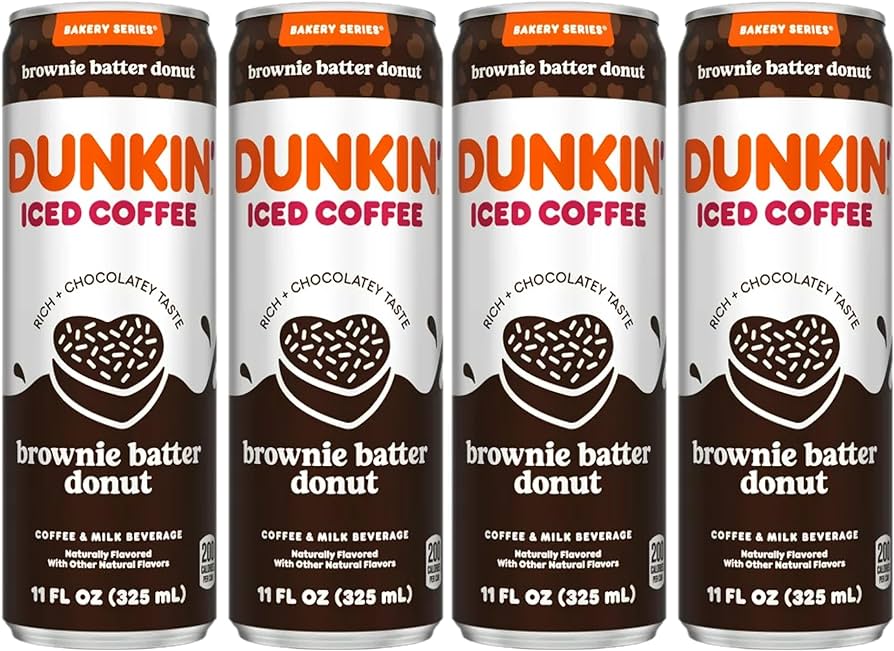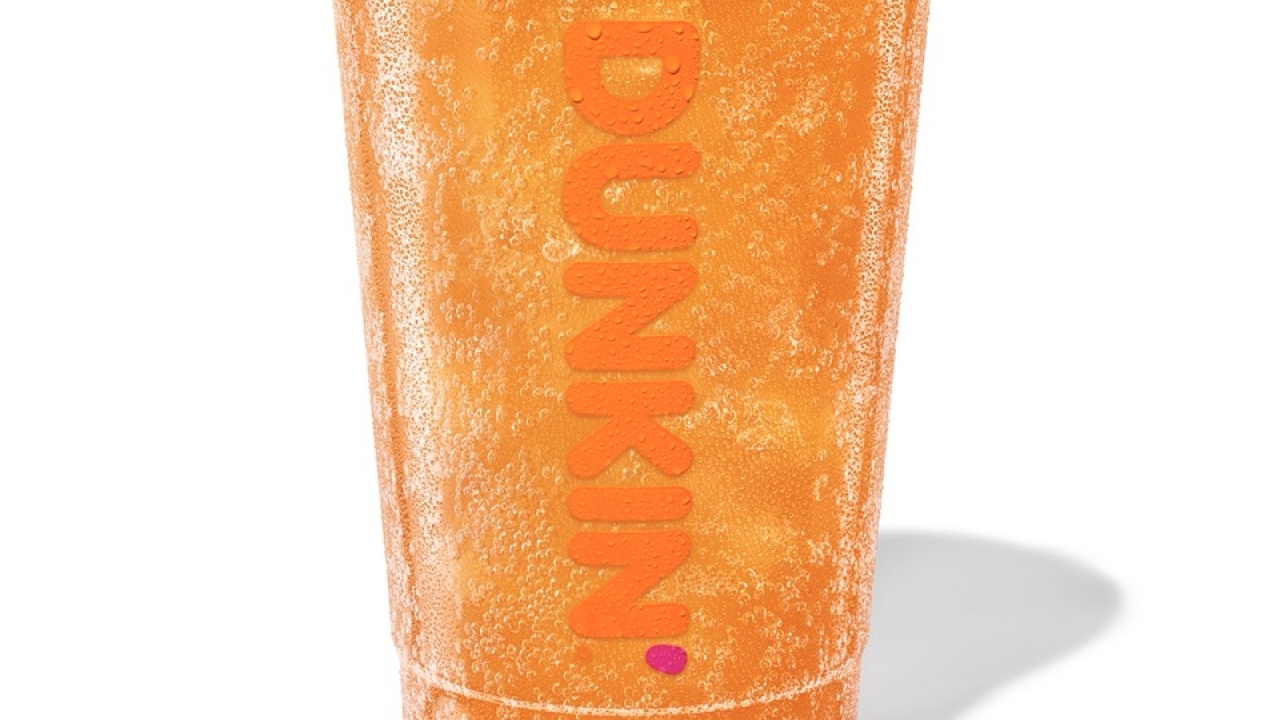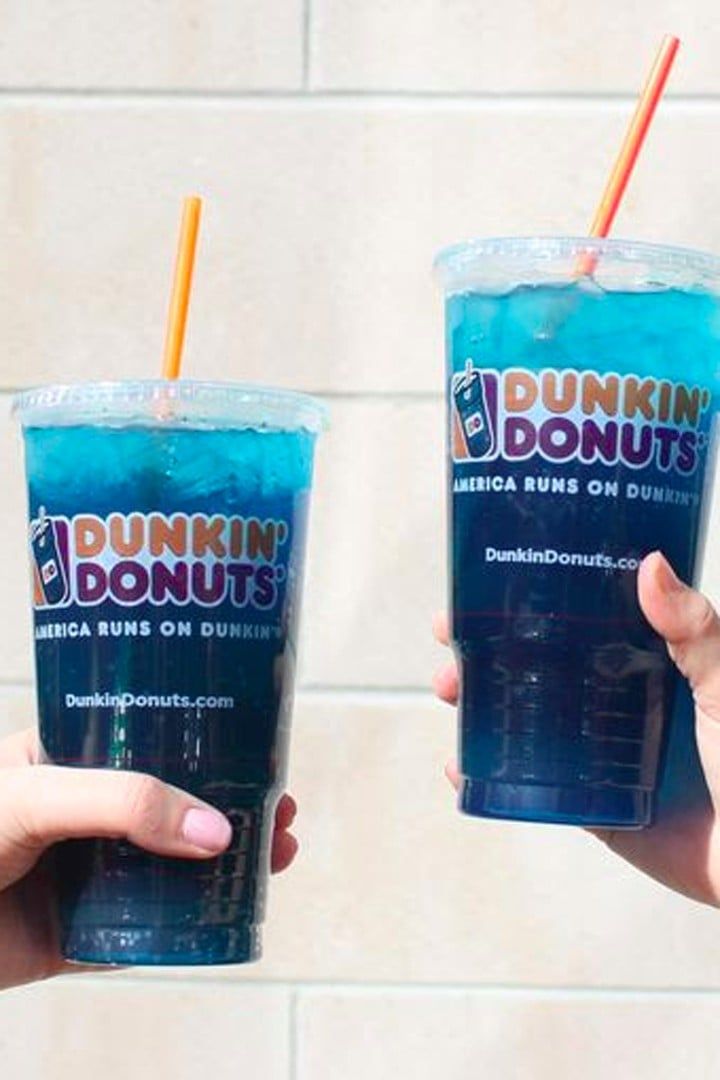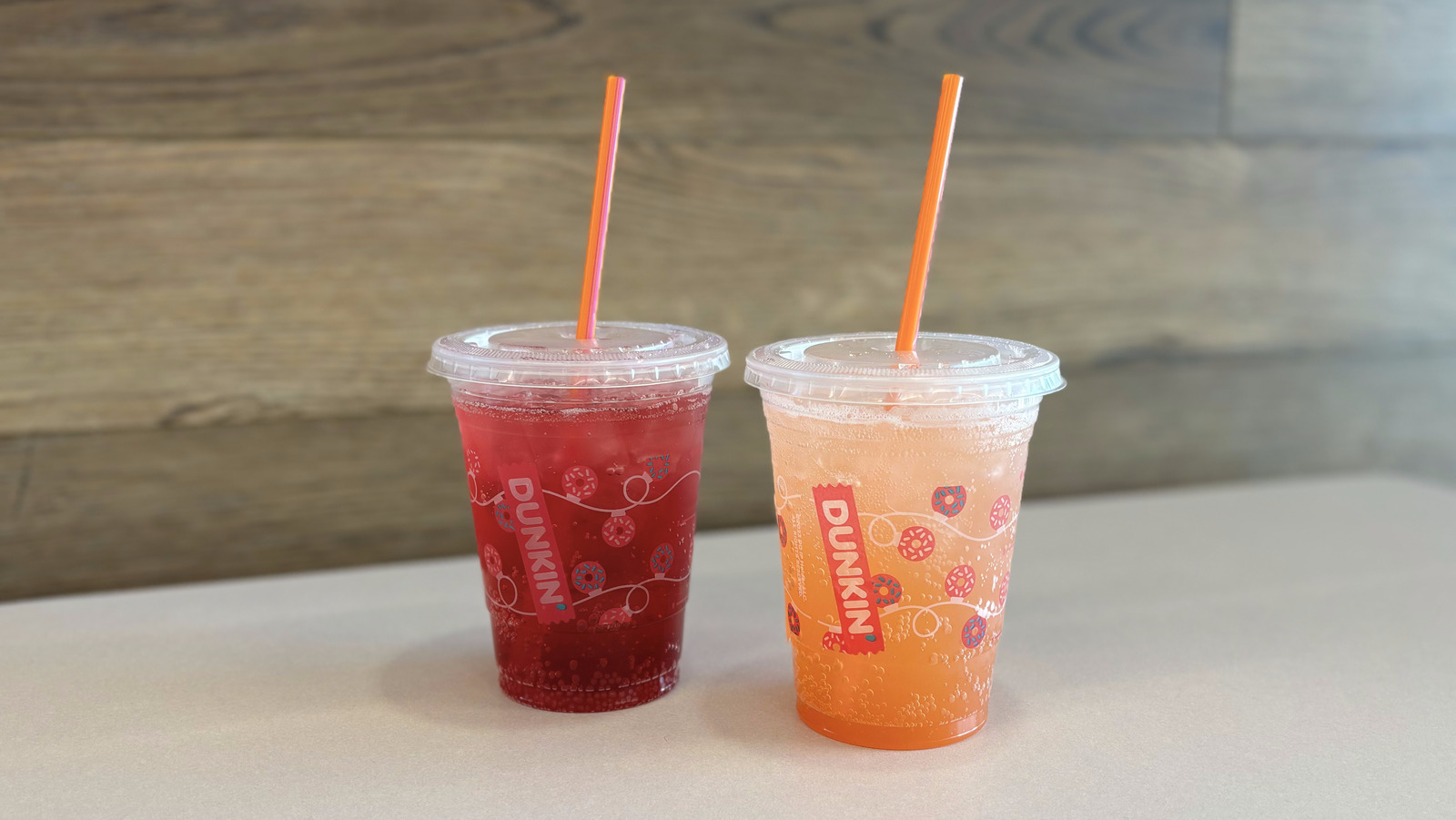
Introduction
In the bustling world of beverages, energy drinks have carved a niche as a popular choice for those seeking a quick energy boost. Dunkin’, the renowned coffee and donut chain, has also entered this arena with its own line of energy drinks, offering consumers an alternative to their traditional offerings. This comprehensive exploration delves into the realm of Dunkin’ energy drinks, examining their product features, target audience, marketing strategies, competitive landscape, health considerations, consumer reviews, brand impact, future outlook, and concluding with additional resources.
Product Description
Dunkin’ energy drinks come in two vibrant flavors: Berry Burst, a refreshing blend of raspberry and strawberry, and Pink Sunshine, a delightful combination of juicy peach and lychee. Available in small and large sizes, these drinks pack a punch of caffeine, with 96 mg in a small and 192 mg in a large. The ingredients list includes water, carbonated water, natural flavors, citric acid, sodium citrate, potassium phosphate, sucralose, acesulfame potassium, caffeine, taurine, guarana seed extract, fruit juice (for flavor), and blue 1.
Target Audience
Dunkin’ energy drinks primarily target active individuals with busy lifestyles, seeking a convenient energy boost to power through their day. This includes students cramming for exams, professionals juggling multiple tasks, athletes seeking pre-workout energy, and individuals simply looking for a refreshing pick-me-up.
Marketing and Advertising
Dunkin’ employs a multi-faceted marketing strategy to promote its energy drinks. Social media platforms like Instagram, Twitter, and Facebook are heavily utilized to engage with potential consumers, showcasing the drinks’ vibrant colors, refreshing flavors, and energizing effects. Collaborations with fitness influencers and lifestyle bloggers further expand the brand’s reach, tapping into their established followings. Additionally, partnerships with sports teams and events provide opportunities for product placement and exposure.
Competition
Dunkin’ energy drinks face stiff competition in the energy drink market, with established brands like Monster Energy, Red Bull, and Rockstar Energy dominating the landscape. To differentiate itself, Dunkin’ emphasizes its association with a trusted and well-loved coffee brand, positioning its energy drinks as a natural extension of its beverage offerings. Additionally, the focus on fruit flavors and lower sugar content compared to some competitors aims to appeal to health-conscious consumers.
Health and Safety Considerations
The high caffeine content in Dunkin’ energy drinks raises concerns about potential health risks, particularly for those sensitive to caffeine or with underlying health conditions. Excessive consumption can lead to jitters, anxiety, insomnia, and digestive issues. It is crucial for consumers to exercise moderation and heed individual tolerance levels. Dunkin’ emphasizes responsible consumption guidelines on its product packaging and website.
Consumer Reviews and Opinions
Overall, Dunkin’ energy drinks have received mixed reviews from consumers. Some praise the refreshing flavors, convenient availability, and moderate caffeine content, while others express concerns about the artificial sweeteners and potential negative effects of high caffeine intake. Positive reviews often highlight the drinks’ ability to provide a quick energy boost without the excessive sugar or artificial flavors found in some competitors.
Impact on Dunkin’ Brand
Dunkin’ energy drinks have contributed to the brand’s overall sales growth, expanding its product portfolio beyond traditional coffee and donuts. The association with energy drinks has introduced Dunkin’ to a new segment of consumers, particularly those seeking a quick energy boost on the go. However, it is essential for Dunkin’ to maintain its focus on quality, health considerations, and brand consistency to ensure that energy drinks remain a positive addition to its offerings.
Future Outlook
The energy drink market is expected to continue growing in the coming years, driven by consumer demand for convenient and effective energy solutions. Dunkin’ can capitalize on this trend by introducing new flavors, exploring functional ingredients, and expanding its distribution channels. Additionally, staying abreast of consumer preferences and health concerns will be crucial for maintaining a competitive edge.
Conclusion
Dunkin’ energy drinks have carved a niche in the beverage market, offering consumers a refreshing and energizing alternative to traditional coffee or sodas. With its focus on flavor, convenience, and brand reputation, Dunkin’ has the potential to further establish itself as a player in the energy drink arena. However, navigating the competitive landscape, addressing health concerns, and adapting to evolving consumer preferences will be essential for long-term success.
Nutritional Comparison
While providing an energy boost, Dunkin’ energy drinks also contain sugar and calories. Comparing them to other popular choices can help consumers make informed decisions. For instance, a large Dunkin’ energy drink (16 oz) has 37 grams of sugar and 140 calories, while a similar-sized Monster Energy drink boasts 54 grams of sugar and 210 calories. This comparison highlights Dunkin’s focus on lower sugar content, potentially appealing to health-conscious consumers.
Sugar-Free Options
Recognizing the growing demand for sugar-free alternatives, Dunkin’ could explore expanding its energy drink line to include a sugar-free option. This would cater to consumers with dietary restrictions or those seeking a zero-sugar energy boost. Sweeteners like stevia or monk fruit extract could be used to maintain flavor without adding sugar or calories.
Functionality and Innovation
The energy drink market increasingly focuses on adding functional ingredients beyond just caffeine. Dunkin’ could explore incorporating B vitamins, electrolytes, or L-theanine, an amino acid promoting focus and relaxation. These additions could position Dunkin’ energy drinks as a more well-rounded solution for an active lifestyle.
Sustainability Considerations
Consumers are becoming increasingly environmentally conscious. Dunkin’ could explore sustainable packaging options for its energy drinks, such as using recycled aluminum cans or biodegradable materials. Additionally, sourcing ingredients responsibly and minimizing the environmental impact of production would resonate with environmentally aware consumers.
Legal and Regulatory Landscape
The energy drink market is subject to various regulations concerning caffeine content, labeling requirements, and marketing practices. Dunkin’ must ensure its energy drinks comply with all relevant regulations set by the Food and Drug Administration (FDA) and other governing bodies. This includes adhering to caffeine content limits, accurately listing ingredients and nutritional information, and avoiding misleading marketing claims. Staying up-to-date on evolving regulations and ensuring transparency in labeling is crucial for responsible participation in the energy drink market.
Ethical Sourcing and Fair Trade Practices
In today’s globalized world, consumers are increasingly concerned about the ethical sourcing of ingredients and fair trade practices. Dunkin’ can demonstrate its commitment to ethical practices by sourcing ingredients like guarana seed extract from regions with sustainable harvesting methods and fair compensation for local communities. Additionally, partnering with fair-trade certified suppliers can further bolster Dunkin’s image as a responsible and ethical brand. This resonates with consumers who value ethical sourcing and contribute to a more sustainable future for the energy drink industry.